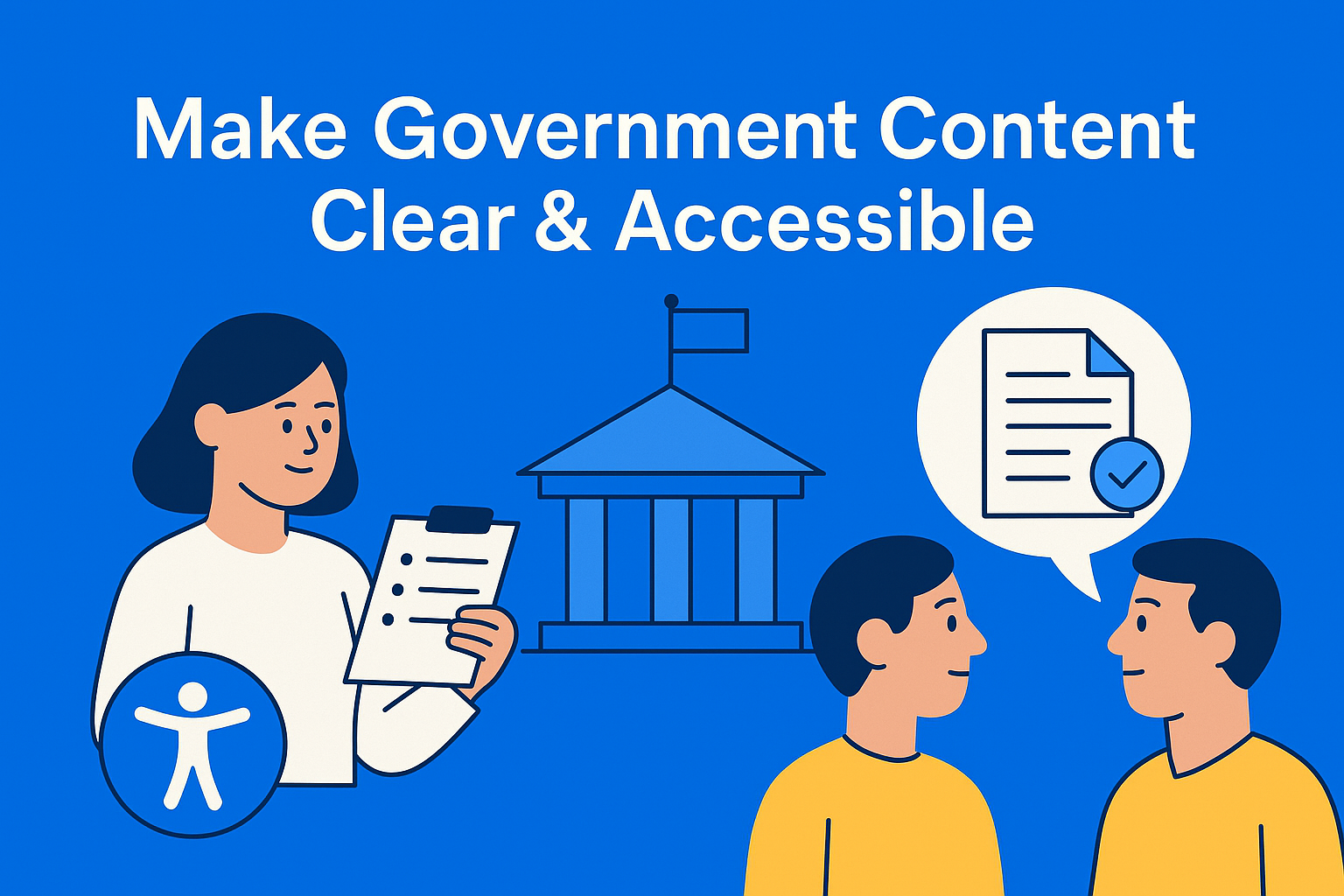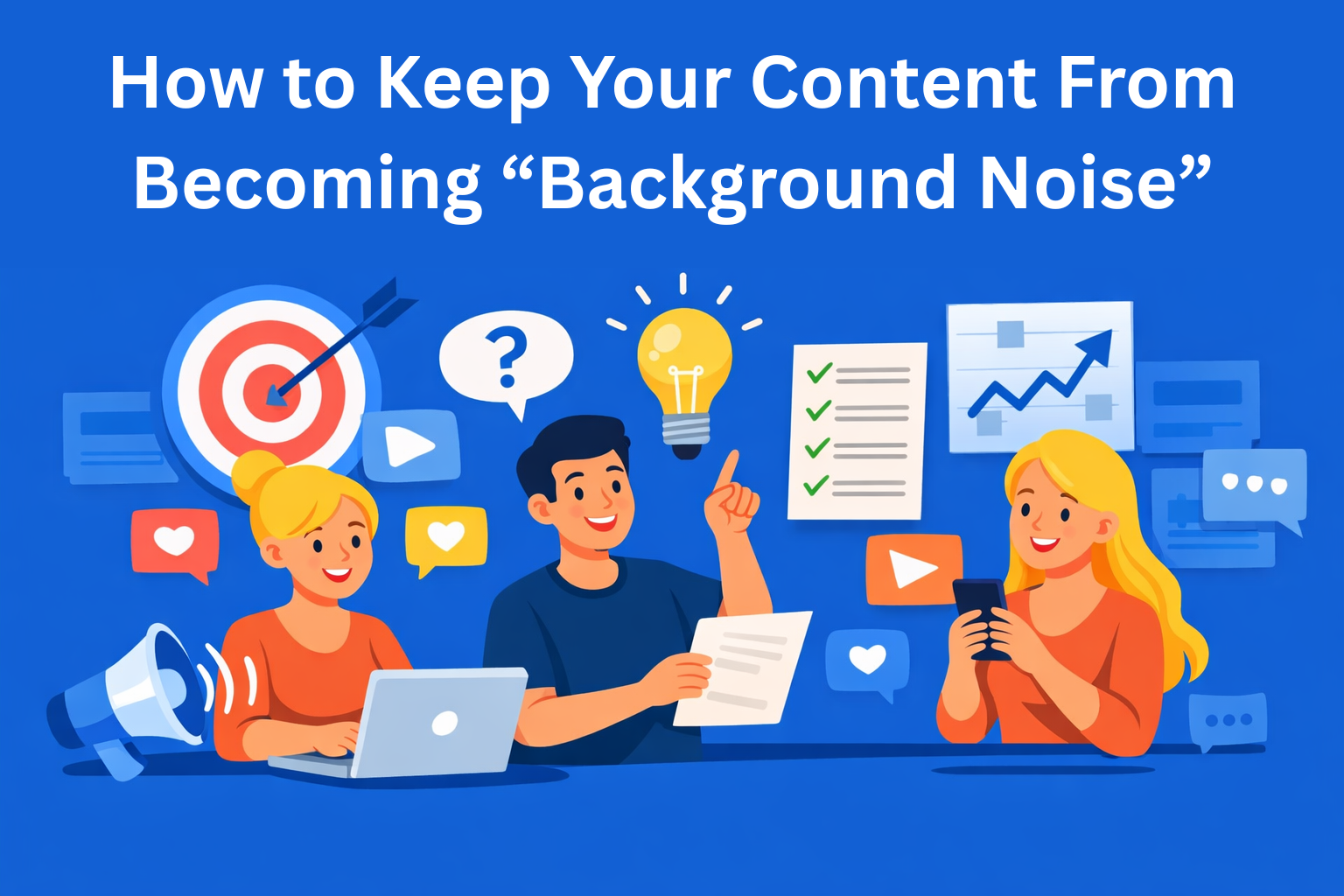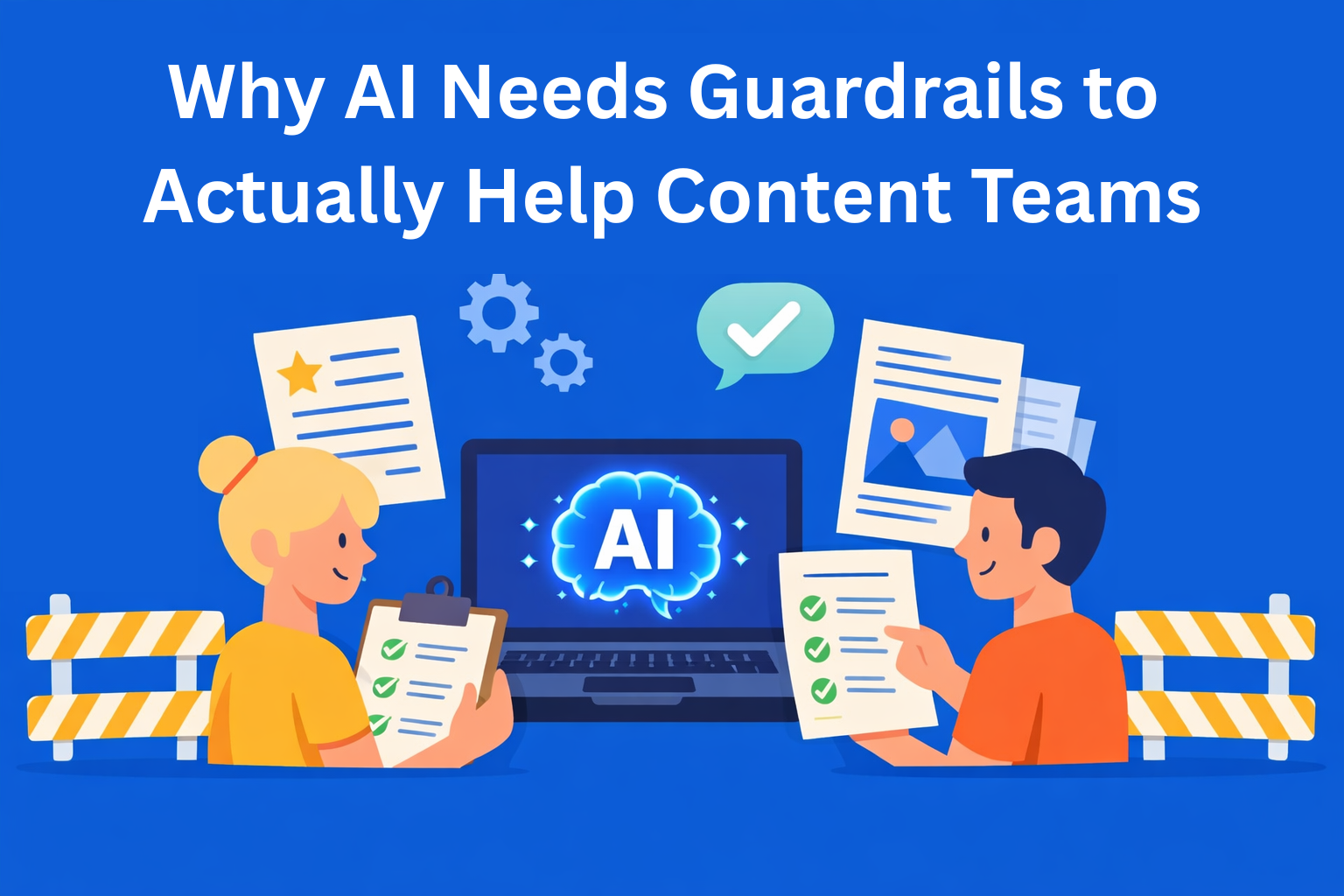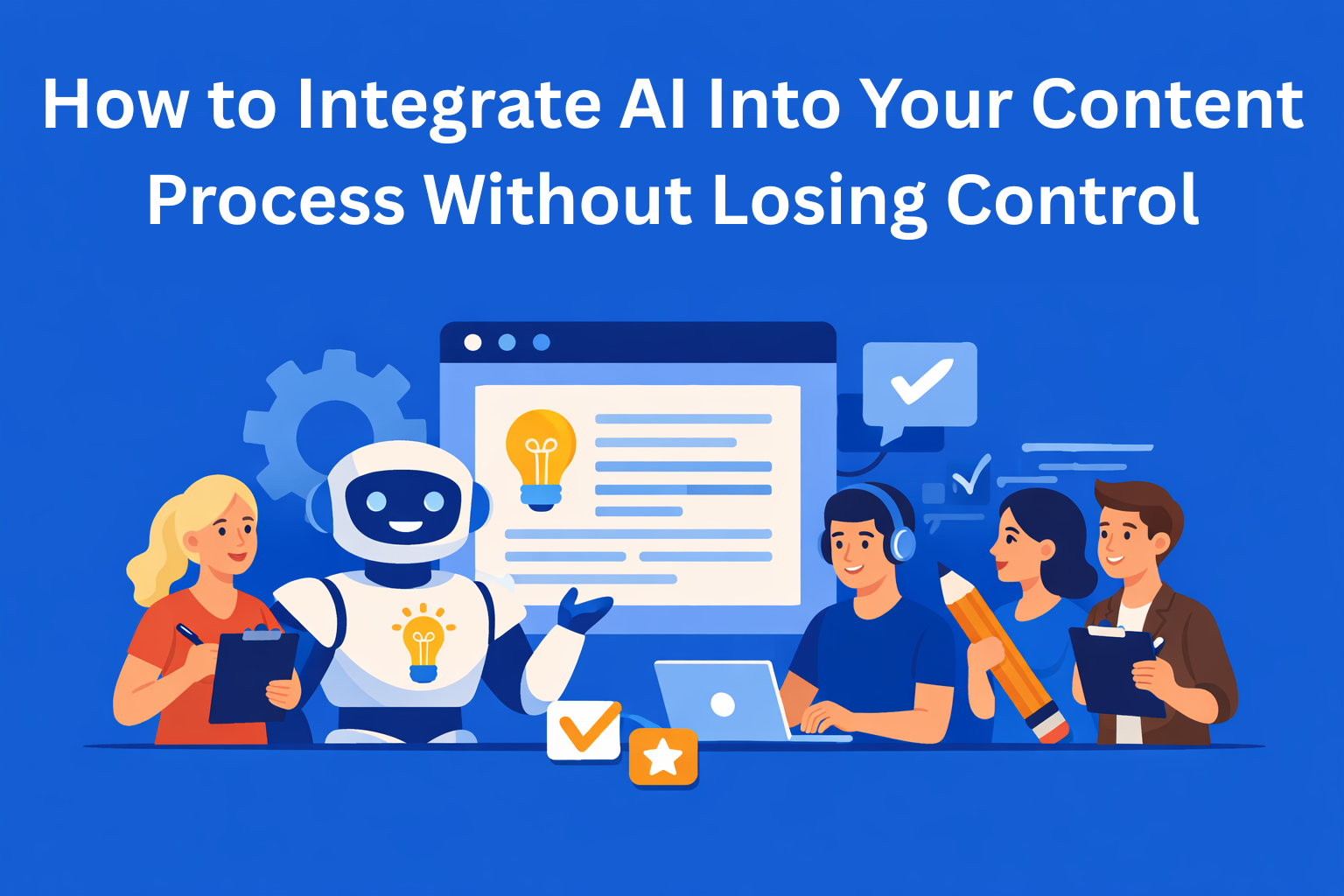How to Implement Plain Language in Government Content for Accessibility & Trust
Plain language is key to making government content clear and accessible. This guide shows how to simplify communication, build public trust, and reduce admin errors - without sacrificing accuracy.

Plain language isn't just a nice-to-have for government content. It's a legal requirement in many regions, a foundational principle for digital accessibility, and one of the fastest ways to build trust with the public.
The public sector doesn't get the luxury of assuming users will "figure it out." If someone visits a government website or reads a government form, it’s likely because they have to, not because they want to. That means the burden is on the content to be as clear, accessible, and helpful as possible.
This guide breaks down what plain language actually means in a government context, why it matters, and how content teams can start implementing it today.
Key Takeaways
- Plain language isn’t optional - It’s a legal and ethical requirement for accessibility, especially in government communication.
- Clarity builds trust - When citizens understand your content the first time, they’re more likely to engage and less likely to get frustrated.
- Create a clear style guide - Define plain language rules upfront to ensure consistency across all departments and writers.
- Train, test, and revise - Support your team with training, test content with real users, and improve based on feedback.
- Use structured tools like EasyContent - Assign roles, enforce style guides, and streamline plain-language workflows from start to finish.
What Is Plain Language?
Plain language (sometimes called "plain English") is communication your audience can understand the first time they read or hear it. It's about clarity, simplicity, and purpose.
Government agencies in the U.S., U.K., Canada, Australia, and beyond have adopted plain language standards to ensure that all citizens, regardless of literacy level, cognitive ability, or native language, can understand official communications.
Plain language doesn’t mean dumbing things down. It means:
- Removing jargon, acronyms, and legalese
- Writing in active voice
- Using short, direct sentences
- Organizing information in a logical order
- Designing for scannability (e.g., bullet points, headings)
Why Plain Language Is Essential for Government
1. Accessibility Compliance
Plain language is a core component of digital accessibility standards like WCAG (Web Content Accessibility Guidelines). When content is too complex, it creates barriers for:
- People with cognitive disabilities
- Non-native English speakers
- Anyone using screen readers
Plain language helps everyone access and understand government services, no matter how they engage with your content.
2. Public Trust and Transparency
Citizens are more likely to trust government communications when they feel understood. Confusing or overly complex language can lead to frustration, misinterpretation, and distrust.
On the other hand, plain language signals that your department is citizen-focused and transparent. It shows you respect your audience’s time and intelligence.
3. Efficiency and Cost Savings
When content is clear, people make fewer mistakes, submit more accurate forms, and contact support teams less often. That leads to:
- Reduced administrative burden
- Faster processing times
- Lower support costs
How to Implement Plain Language in Your Content Process
1. Create a Plain Language Style Guide
Don’t leave clarity up to chance. Develop (or adopt) a style guide that defines what plain language looks like for your department.
This should include:
- Words to avoid (e.g., technical jargon, acronyms)
- Guidelines for sentence and paragraph length
- Formatting rules for clarity (e.g., headings, bullet lists)
Pro tip: In EasyContent, you can set custom content guidelines directly within each piece of content. That means every writer and reviewer sees the rules before they start working, making it much easier to stay consistent across your department.
2. Train Your Team
Even experienced writers fall into habits. Host workshops or training sessions to:
- Raise awareness of plain language standards
- Share before-and-after content examples
- Practice rewriting real content using the new style guide
Use internal reviews and collaborative tools to reinforce plain language principles during your content workflow.
3. Test with Real Users
Before publishing content to a broad audience, test it with a small group of users. This might include:
- Internal staff from different departments
- Members of the public (especially those from diverse backgrounds)
- People with disabilities
Ask them:
- Was this easy to understand?
- Would you know what to do next?
- Are any parts confusing or unclear?
Use their feedback to revise and improve your drafts before launching.
4. Use Tools (But Don’t Rely Solely on Them)
Readability tools like Hemingway App or Grammarly can help flag overly complex sentences and passive voice. But they aren’t enough on their own.
The best way to ensure plain language is through peer review and human editing. Look for:
- Unnecessary words or repetition
- Overuse of modifiers or vague terms (e.g., "ensure," "leverage")
- Poorly structured information
Pair automated checks with manual reviews for the best results.
5. Establish Content Roles and Review Workflows
Implementing plain language standards means everyone (not just writers) needs to understand their role.
- Writers need clear expectations
- Editors ensure clarity and consistency
- Reviewers verify accuracy and compliance
Platforms like EasyContent allow you to assign these roles and automate workflows, so everyone knows what to do and when. This helps eliminate confusion and keeps your plain language goals on track.
Real-Life Example: Before & After
Before:
"Applicants are required to submit all pertinent documentation in a timely manner in order to be considered for enrollment."
After:
"Send your documents on time to be considered for enrollment."
The second version is shorter, clearer, and easier to follow, especially for someone reading quickly or using assistive tech.
Conclusion: Clear Words Create Stronger Connections
Government departments serve everyone. That means your content must be readable by everyone. Plain language isn’t just good practice - it’s ethical, efficient, and essential for accessibility.
The good news? You don’t have to overhaul your entire department to make this shift. Start small:
- Add clear content guidelines
- Train your team
- Build better workflows
- Use the right tools
With a platform like EasyContent, you can bake plain language into your process from day one. Assign roles, set standards, and collaborate with ease, all while building public trust one sentence at a time.






